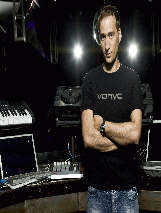The Evolution Of Music Part - X TRANCE
The Evolution Of Music Part - X TRANCE
 Trance is a genre of electronic in the 1990s. Trance music is generally characterized by a tempo of between 130 and 155 BPM (beats per minute), short melodic synthesizer phrases, and a musical form that builds up and down throughout a track. It is a combination of many forms of music such as industrial, techno, and house. The origin of the term is uncertain, with some suggesting that the term is derived from the Klaus Schulze album Trancefer (1981) or the early trance act Dance 2 Trance. In any case, the name is undoubtedly linked to the perceived ability of music to induce an altered state of consciousness known as a trance.
Trance is a genre of electronic in the 1990s. Trance music is generally characterized by a tempo of between 130 and 155 BPM (beats per minute), short melodic synthesizer phrases, and a musical form that builds up and down throughout a track. It is a combination of many forms of music such as industrial, techno, and house. The origin of the term is uncertain, with some suggesting that the term is derived from the Klaus Schulze album Trancefer (1981) or the early trance act Dance 2 Trance. In any case, the name is undoubtedly linked to the perceived ability of music to induce an altered state of consciousness known as a trance.
Origin
Early in the 1980s the German composer Klaus Schulze composed several albums of experimental ‘space music’ which was highly atmospheric and sequencer-driven. Some of these songs share many similarities with early trance music and are sometimes categorized as trance. Predating Schulze’s 1980’s releases however was Jean Michel Jarre’s Oxygène from 1976 and Equinoxe in 1978. Jarre, who experimented with the similar styles of atmospheric experimental that gave rise to Schulze’s 1980’s efforts and the many others that followed is widely regarded as the godfather of the genre.
In retrospect, some of the earliest identifiable trance recordings came from the acid house movement, which was pioneered by The KLF who labeled these early recordings ‘Pure Trance’ and and which are significantly more minimalist, nightclub-oriented and ‘underground’ in sound.
The trance sound beyond this acid-era genesis is said to have been an off-shoot of techno in German clubs during the very early 1990s. Germany is often cited as a birthplace of trance culture. Some of the earliest pioneers of the genre included Jam El Mar, Oliver Lieb, and Sven Väth who all produced numerous tracks under multiple aliases. Arguably a fusion of techno and house music, early trance shared much with techno in terms of the tempo and rhythmic structures but also added more melodic overtones. These early forms of trance are now referred to as classic trance and were longer and more abstract than the more danceable trance that was to follow.
Popular trance
 By the mid-1990s trance, specifically progressive trance, which emerged from acid trance much as progressive house had emerged from acid house, had emerged commercially as one of the dominant genres of dance music. Progressive trance has set in stone the basic formula of modern trance by becoming even more focused on the anthemic basslines and lead melodies, moving away from hypnotic, repetitive, arpeggiated analog synth patterns and spacey pads. Meanwhile, a different type of trance, generally called uplifting trance was becoming popular. Uplifting trance had buildups and breakdowns that were longer and more exaggerated, being more direct and less subtle than progressive, with more easily identifiable tunes and anthems. Many such trance tracks follow a set form, featuring an introduction, steady build, a breakdown, and then an anthem, a form aptly called the ‘build-breakdown-anthem’ form. Uplifting vocals, usually female, were also becoming more and more prevalent, adding to trance’s popular appeal.
By the mid-1990s trance, specifically progressive trance, which emerged from acid trance much as progressive house had emerged from acid house, had emerged commercially as one of the dominant genres of dance music. Progressive trance has set in stone the basic formula of modern trance by becoming even more focused on the anthemic basslines and lead melodies, moving away from hypnotic, repetitive, arpeggiated analog synth patterns and spacey pads. Meanwhile, a different type of trance, generally called uplifting trance was becoming popular. Uplifting trance had buildups and breakdowns that were longer and more exaggerated, being more direct and less subtle than progressive, with more easily identifiable tunes and anthems. Many such trance tracks follow a set form, featuring an introduction, steady build, a breakdown, and then an anthem, a form aptly called the ‘build-breakdown-anthem’ form. Uplifting vocals, usually female, were also becoming more and more prevalent, adding to trance’s popular appeal.
Immensely popular, trance found itself filling a niche that was ‘edgier’ than house, more soothing than drum and bass, and more melodic than techno, which made it accessible to a wide audience. Artists like Paul van Dyk and Robert Miles came to the forefront as premier producers and remixers, bringing with them the emotional, ‘epic’ feel of the style. By the end of the 1990s, trance remained commercially huge, but had fractured into an extremely diverse genre. Some of the artists that had helped create the trance sound in the early and mid-1990s had, by the end of the decade, abandoned trance completely in favor of more underground sounds - artists of particular note here include Pascal F.E.O.S. and Oliver Lieb.
Post-popular trance
As an alternative evolution some artists have attempted to fuse trance with other genres such as drum ‘n’ bass. Frustrated, extreme versions of trance have mutated through gabber into fringe genres of ‘hard trance’ or ‘hardstyle’ overlapping with hardcore and terrorcore.
Trance more loyal to its roots has begun to rear its head on the internet with the abundance of legal music download sites. As a result, both commercial and progressive trance now have a much more global presence, with big-draw artists.


